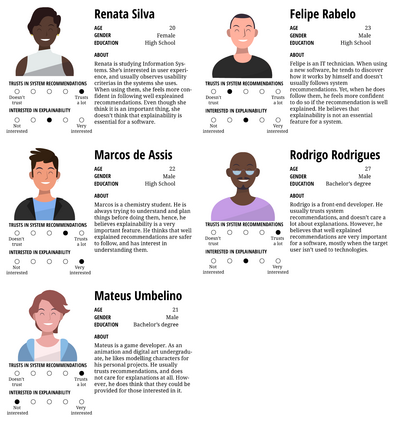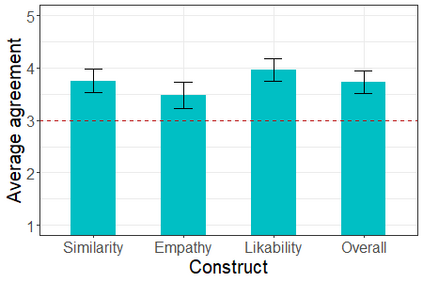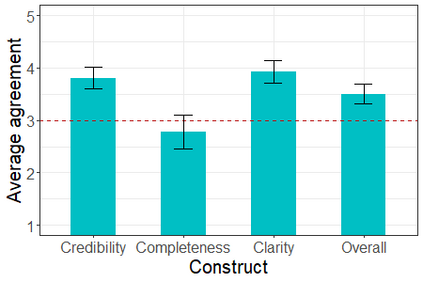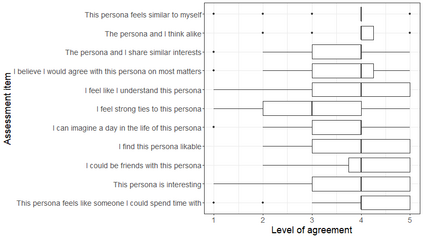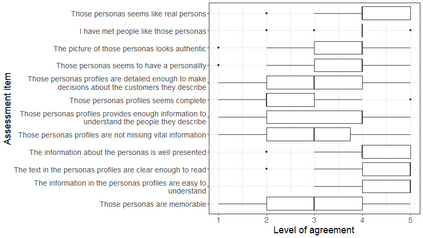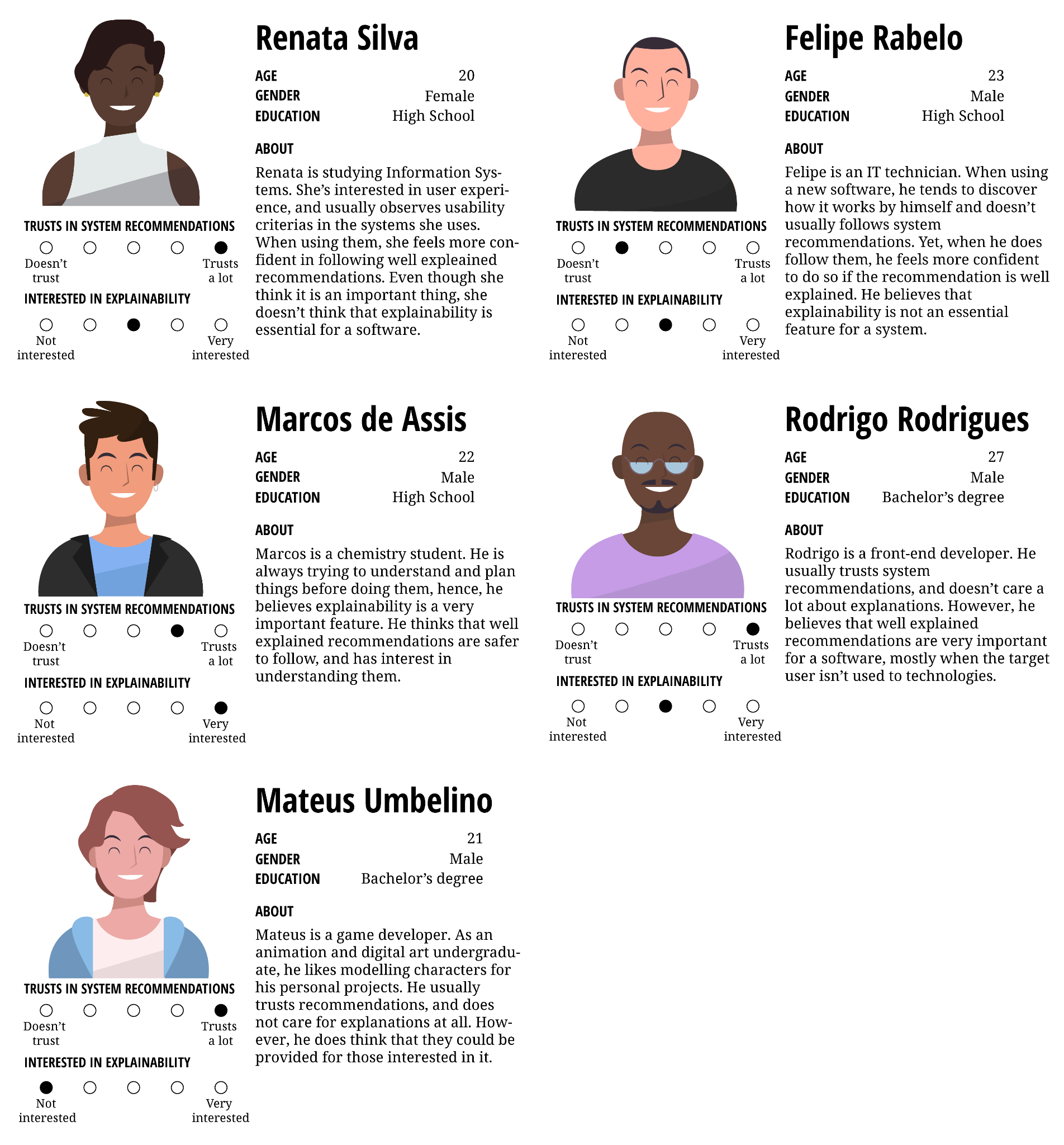This work focuses on the context of software explainability, which is the production of software capable of explaining to users the dynamics that govern its internal functioning. User models that include information about their requirements and their perceptions of explainability are fundamental when building software with such capability. This study investigates the process of creating personas that include information about users' explainability perceptions and needs. The proposed approach is based on data collection with questionnaires, modeling of empathy maps, grouping the maps, generating personas from them and evaluation employing the Persona Perception Scale method. In an empirical study, personas are created from 61 users' response data to a questionnaire. The generated personas are evaluated by 60 users and 38 designers considering attributes of the Persona Perception Scale method. The results include a set of 5 distinct personas that users rate as representative of them at an average level of 3.7 out of 5, and designers rate as having quality 3.5 out of 5. The median rate is 4 out of 5 in the majority of criteria judged by users and designers. Both the personas and their creation and evaluation approach are contributions of this study to the design of software that satisfies the explainability requirement.
翻译:这项工作侧重于软件解释的背景,即制作能够向用户解释其内部功能动态的软件,用户模型,包括关于其要求的信息和对解释的理解,在以这种能力建立软件时至关重要;本研究调查创建人的过程,包括关于用户解释观点和需求的信息;拟议方法以问卷收集数据、对同情图进行建模、对地图进行分组、从中产生人并采用个人认知尺度方法进行评价为基础;在一项实验研究中,根据61个用户对问卷的答复数据创建人;由60个用户和38个设计师对生成的人进行评价,其中考虑到人的理解尺度方法的属性;结果包括一套5个用户作为用户代表的平均比例为3.7的5人,设计者比例为质量为3.5的5人;在用户和设计者判断的大多数标准中,中位率为5人中的4人;个人及其创建和评价方法都有助于设计符合解释要求的软件。

